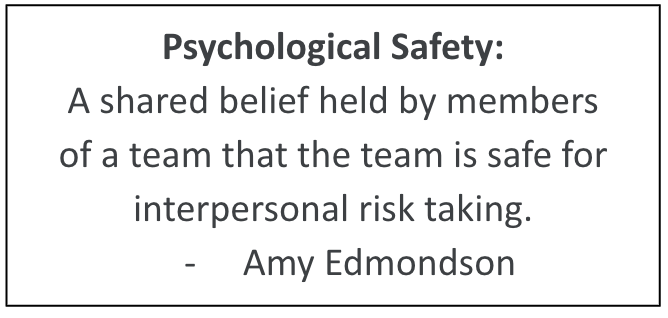
When your team is stuck or at odds with one another, it’s not unlike the weight we feel when the atmospheric pressure has dropped. We often feel drained, and we move more slowly. Some of us get a headache.
Cultivating healthy engagement across the team is one way to raise the barometric pressure and make room for clear and inviting skies.
Healthy engagement happens when your team and stakeholders feel valued and have a sense of belonging. When team members feel respected and “psychologically safe,” you will optimize idea generation, participation and decision making.

Fostering healthy engagement is not necessarily a heavy lift (so to speak). It does, however, require that you invest time to:
- Reflect on the communication and style nuances of individual team members
- Identify the biggest differences with your own
- Flex your approach, or help your team members develop new skills
While investing in style, communication and 360-degree assessments for your team encourages self-awareness and transparency, the following considerations are a good starting point when reflecting on the preferences of your team members:
- Speaking up – Some people are perfectly comfortable speaking up in a larger group setting; others simply choose not to speak unless what they have to say is substantive.
- How we communicate – Not everyone is able to express themselves directly and clearly. Some prefer to take a more circuitous path to get to the point.
- Communication medium – Organizations also have their own preferences for Slack, text, email, or (wait for it) phone – in-person or virtual meeting place brings additional considerations to the mix.
- Recognizing a job well done – Some people savor public praise, while others favor a personal “thank you” away from the limelight. Then, there are those who prefer no praise at all and believe a job well done speaks for itself.
- What we listen for – There are the “Just the facts” listeners and those who focus on the impact to people and relationships. Others simply cannot hear the details if the big idea or overarching strategy is unclear.
- Cadence and pace – Project variety and working in short bursts are key motivators for some individuals, contrary to people who thrive with contextual, deep work requiring longer periods of uninterrupted time.
- How quickly we make decisions – There are those who are completely comfortable deciding on the spot (come what may the consequences) and others who need deliberation time and love a good decision tree.
- How we generate ideas – Out-of-the-box thinkers are in heaven when invited to a brainstorming session. Let the spit-balling begin! Yet, an empty white board is intimidating and a recipe for shutting some people down.
It’s remarkable, really, that anything gets done when you consider the wide array of individual communication and style nuances.

Understanding your personal preferences and those of the individuals on your team, however, is a critical path to recognizing differences and building a culture of respect, inclusion, and healthy engagement.
Here’s to the bright and sunny skies ahead!
Share This Post:
Speak Your Mind